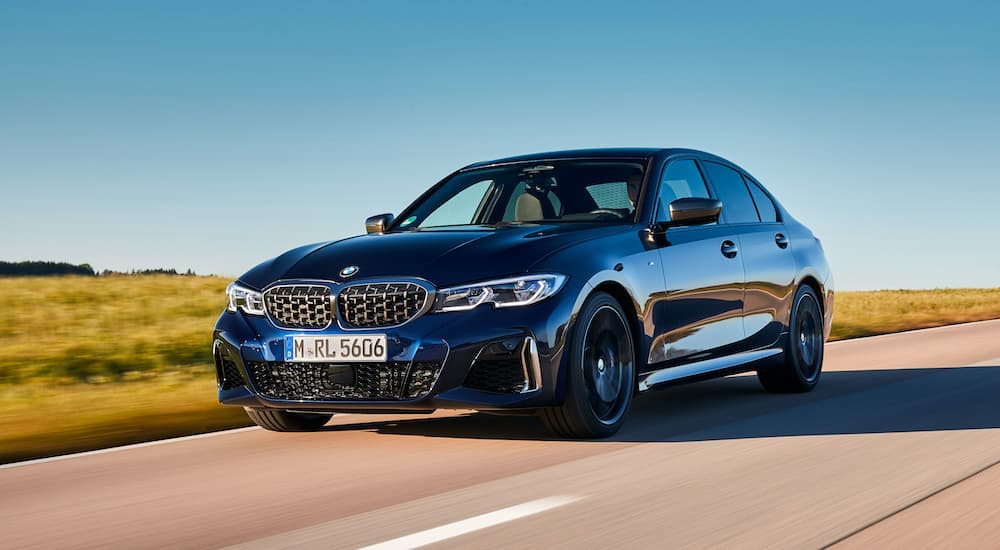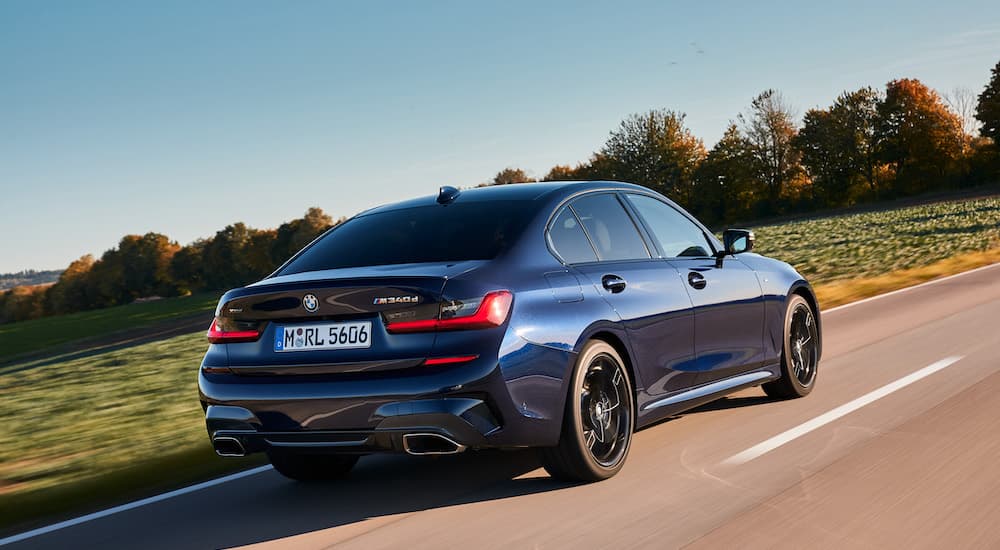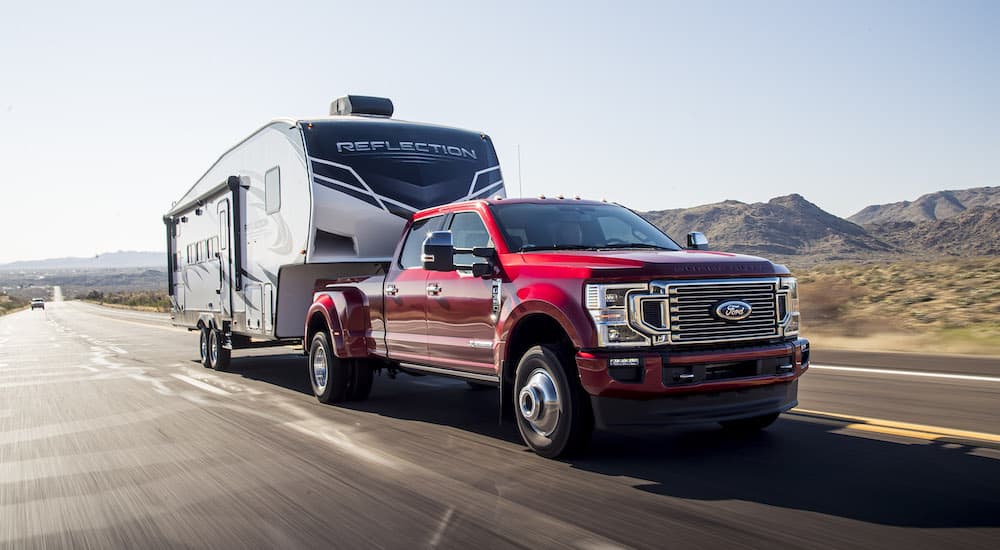If you’re a car buff and have spent some time in Europe, you’ve probably seen something very interesting. Europeans not only have a love affair with efficient compact cars but also seem to be totally cool about driving diesel vehicles. In fact, as of the start of this year, almost 20% of new cars sold in the European Union featured a diesel engine. This has come at a time when the EU is pushing alternative fuel vehicles and just announced that it will ban the sale of new gas and diesel cars starting in 2035. Nevertheless, you are still going to see plenty of Mercedes-Benz, Renault, Peugeot, and Skoda diesel coupes and sedans cruising down the Autobahn, the Autostrade, and the Autoroute.
Once upon a time, automakers thought they could get Americans interested in buying cars equipped with diesel engines. It was during the 1970s when the US was plagued by not one but two oil shocks. The 1973 and 1979 oil crises led to long gas lines, upsetting motorists and driving automakers to seek ways to make their vehicles more fuel efficient. Since gasoline is a byproduct of refining diesel oil, the thought was that you could stretch a barrel of crude further by getting drivers to use diesel instead of gas. While this made perfect sense, the experiment proved to be as big a failure here as it was a success across the Atlantic Ocean. Why did this happen? How could the brands have been so wrong about diesel cars?
My Personal Experience
In 1977, my parents were struggling to put my oldest brother through college during a time of high inflation. In order to cut the cost of gasoline, my dad opted to buy a 1977 Peugeot 504 Diesel. There was a local Subaru-Peugeot dealership near our house, so my dad went in one day with his 1973 Cadillac Sedan DeVille and came home with a brand-new Peugeot.
In order to accommodate his new vehicle, my dad made a few changes to the house. First, he ran an outlet from the garage to the front driveway. This would allow him to plug in the Peugeot’s glow plugs during the winter. You see, this is one drawback of owning a diesel car. During cold weather, the oil can congeal, making it difficult or impossible to start your vehicle. Glow plugs keep the diesel fuel nice and warm, ready to fuel the engine.
Second, he needed a source of diesel oil. The nearest service station that had diesel oil for trucks was a good two miles from the house. After doing some research, my dad discovered that home heating oil was the same as diesel fuel and could be safely used in his Peugeot. The only problem was that our house had always had gas heat. He bought an oil tank, installed it in the garage, and contracted with a home heating oil company to make bi-weekly deliveries to our house.
My dad went a step further over the years. He began doing his own oil changes at home to save money. Then, when the 1979 oil embargo hit, he added a second diesel car, a 1980 Oldsmobile Delta 88 Diesel. While our neighbors contended with long lines at the gas pump and the misery of odd and even rationing, my dad continued to cruise around in his two diesel cars. That’s because the oil embargo did not seem to affect the home heating oil business. A third diesel car would follow two years later, a 1981 Oldsmobile Cutlass Supreme Diesel Coupe. This had a sporty, two-tone paint job of deep blue on the body and a sandstone hood and roof. You have to keep in mind that the early 1980s still had some of the questionable taste of the 1970s. My dad would go on driving these three diesel cars for the first half of the decade, still doing his own oil changes and filling up from his home heating oil tank.
Benefits of Diesel Cars
There are a number of benefits to using a diesel engine in a car. For one thing, they get better fuel economy than gas engines in comparable models. The Peugeot 504 would often get a robust 30 miles to the gallon whenever my dad took it out on long drives to visit my brothers and me in college in Baltimore and Boston. The same held true for the two Oldsmobile diesel cars as well.
Diesel engines are also quite reliable. As long as my dad did his routine maintenance and remembered to plug in the glow plugs, he’d have no problem starting them up, even on the coldest days of winter. This is because diesel engines have fewer working parts than gas engines, which also helps them last longer on average. Diesel fuel burns using pressure to release energy, so there are no spark plugs. Finally, diesel fuel is safer than gasoline. While gasoline can explode, that is not possible with diesel fuel. This is why it is perfectly safe to store diesel fuel and home heating oil inside a house.
What Went Wrong?
The failure of diesel cars in America can actually be seen in the personal experiences of my father. For one thing, most folks are not that handy. Asking them to put a home heating oil tank in their house to keep a diesel car fueled is truly going a bridge too far. If a motorist lives in an apartment building, they won’t have access to a garage to store the diesel fuel nor an outlet to keep their diesel car’s glow plugs plugged in during the winter. Also, the diesel cars that were sold in America were noisy and produced a prodigious amount of noxious fumes. Our neighbors always complained about the noise and the smell produced by our diesel cars.
As for driving, the acceleration on the diesel cars left a lot to be desired. For example, the Peugeot 504 had a 71 hp diesel engine that could propel it from zero to 60 mph in a sluggish 21.7 seconds. I remember my Mom having to turn off the A/C on the Peugeot when she hit the highways during the summer just so she could get it up to speed to merge into traffic. It was truly a white-knuckle experience. The Delta 88 wasn’t much better, with a 5.7-liter V8 that produced 105 hp and 205 lb-ft of torque propelling this full-size beast. This was the same engine in the midsize Cutlass Supreme Diesel Coupe, making the coupe a racecar compared to the Delta 88 and the Peugeot.
It didn’t help that the Oldsmobile diesels were notorious for design defects, like using a bolt pattern designed for a gas engine instead of one that could handle a more powerful diesel engine. In addition, the late 1970s and early 1980s was a time when General Motors was having issues with quality control, which further hurt the reputation of its diesel models. Most Americans didn’t have access to the diesel cars offered by Mercedes-Benz, Volkswagen, and Peugeot. Even if they did, many American motorists couldn’t afford one of these foreign models. Thus, if they wanted a diesel car, they usually opted for one of the models offered by General Motors. As many drivers began to complain, the missteps of a few lemons tainted the entire concept of the diesel car.
Where We Are Today
The great diesel car experiment in America is long since dead. Despite the benefits of greater fuel economy and easier maintenance, most American drivers were put off by the fumes, the noise, and the quality control issues. In addition, gas prices went down throughout the decades following the 1979 oil embargo, so there was no great push to find alternative energy sources. Finally, diesel cars have been surpassed by the success of hybrids and electric vehicles. These alternative energy vehicles provide all of the benefits of diesel with none of the drawbacks.
My dad eventually got rid of his diesel cars too. The last one he owned was the Cutlass Supreme. He sold it to the kid next door, who was a gifted auto mechanic. Eli removed the diesel engine, putting it in a pickup truck and replacing it with a standard gasoline V8 engine.
Today, you can still find diesel engines offered as an option on heavy-duty pickup trucks, off-road models like the Jeep Wrangler, and full-size SUVs like the Cadillac Escalade, GMC Yukon, and Chevy Tahoe. But if you want to ride in a diesel coupe or sedan, you had better book a trip to the European Union before 2035.






